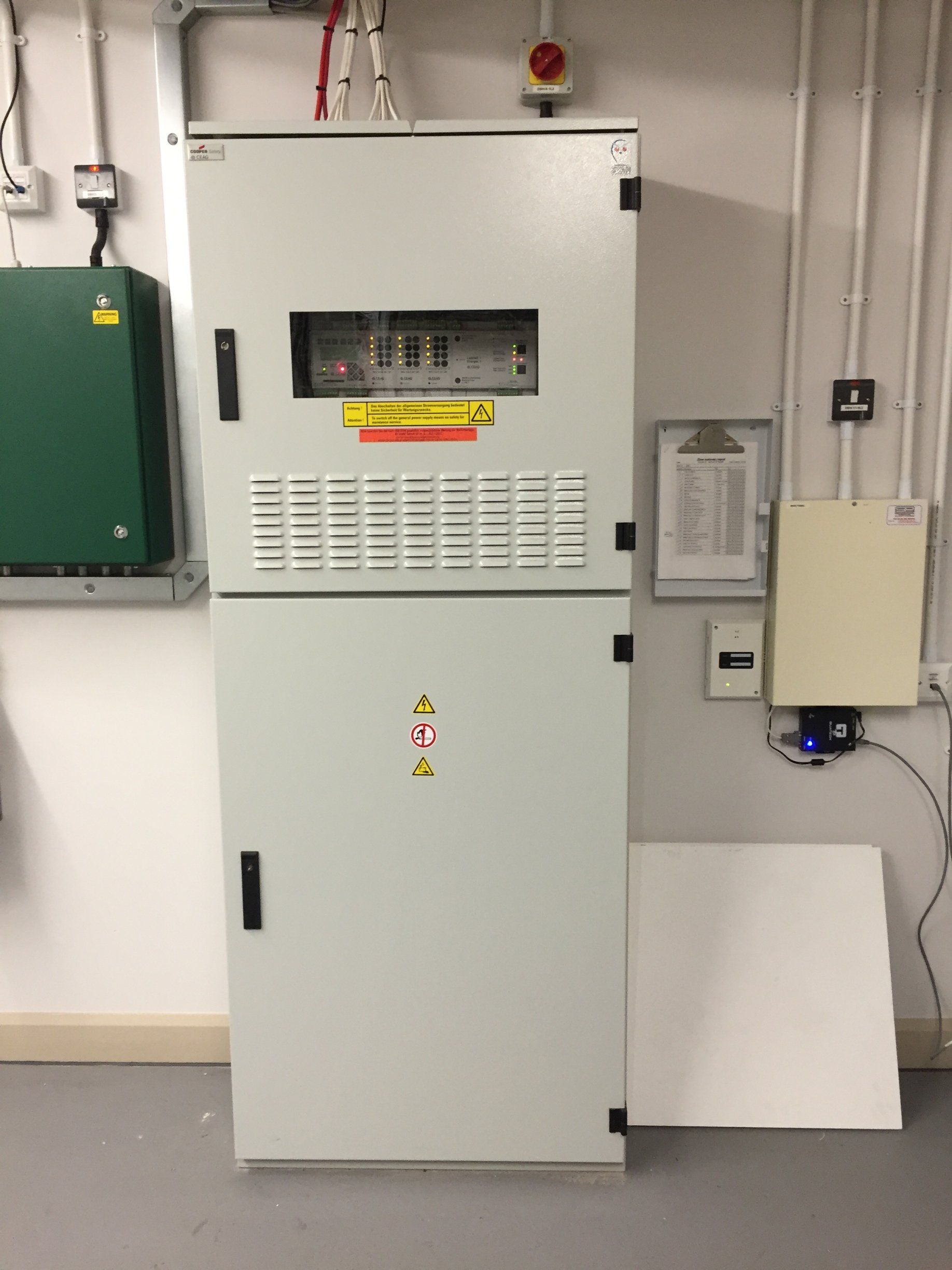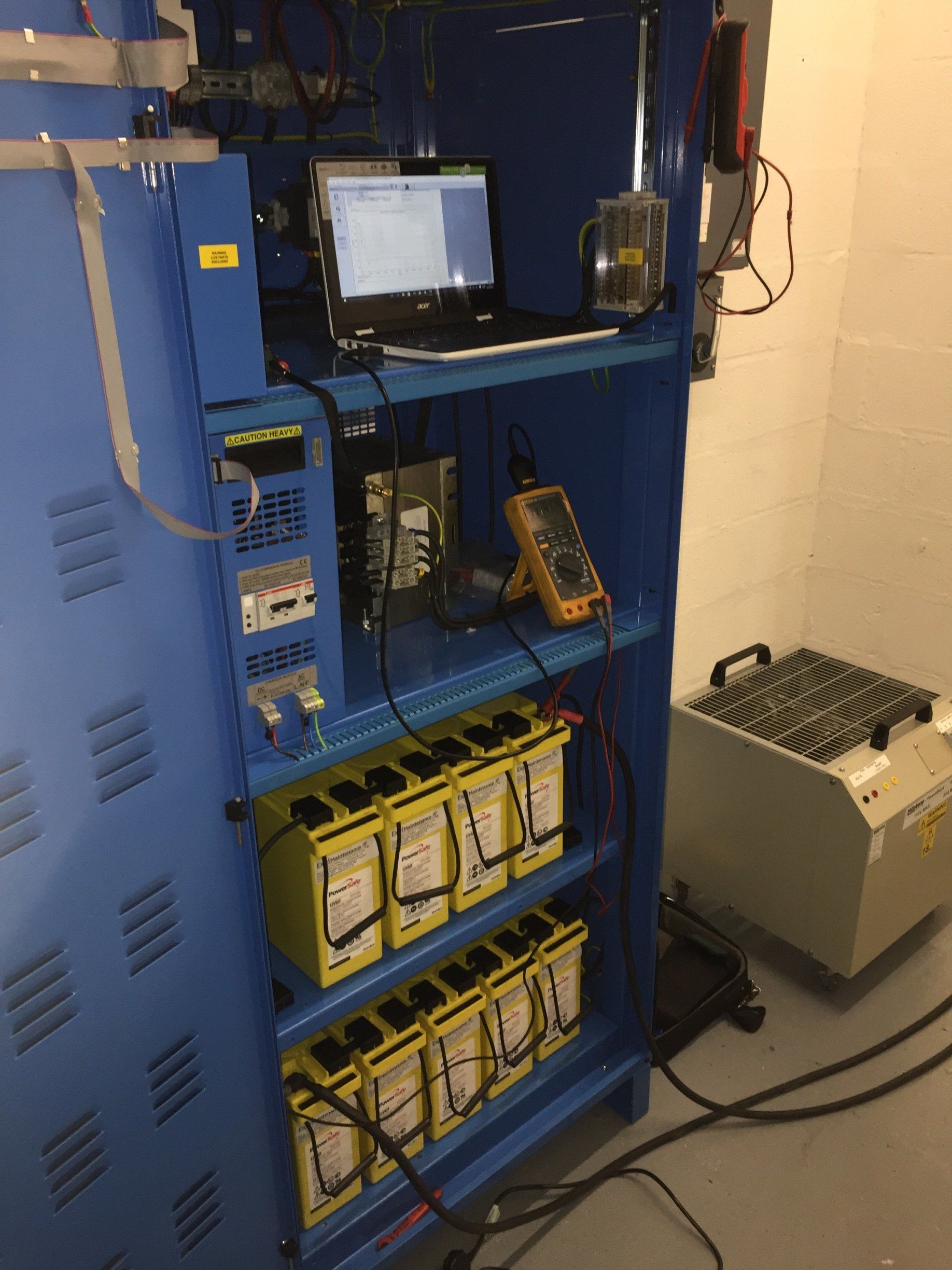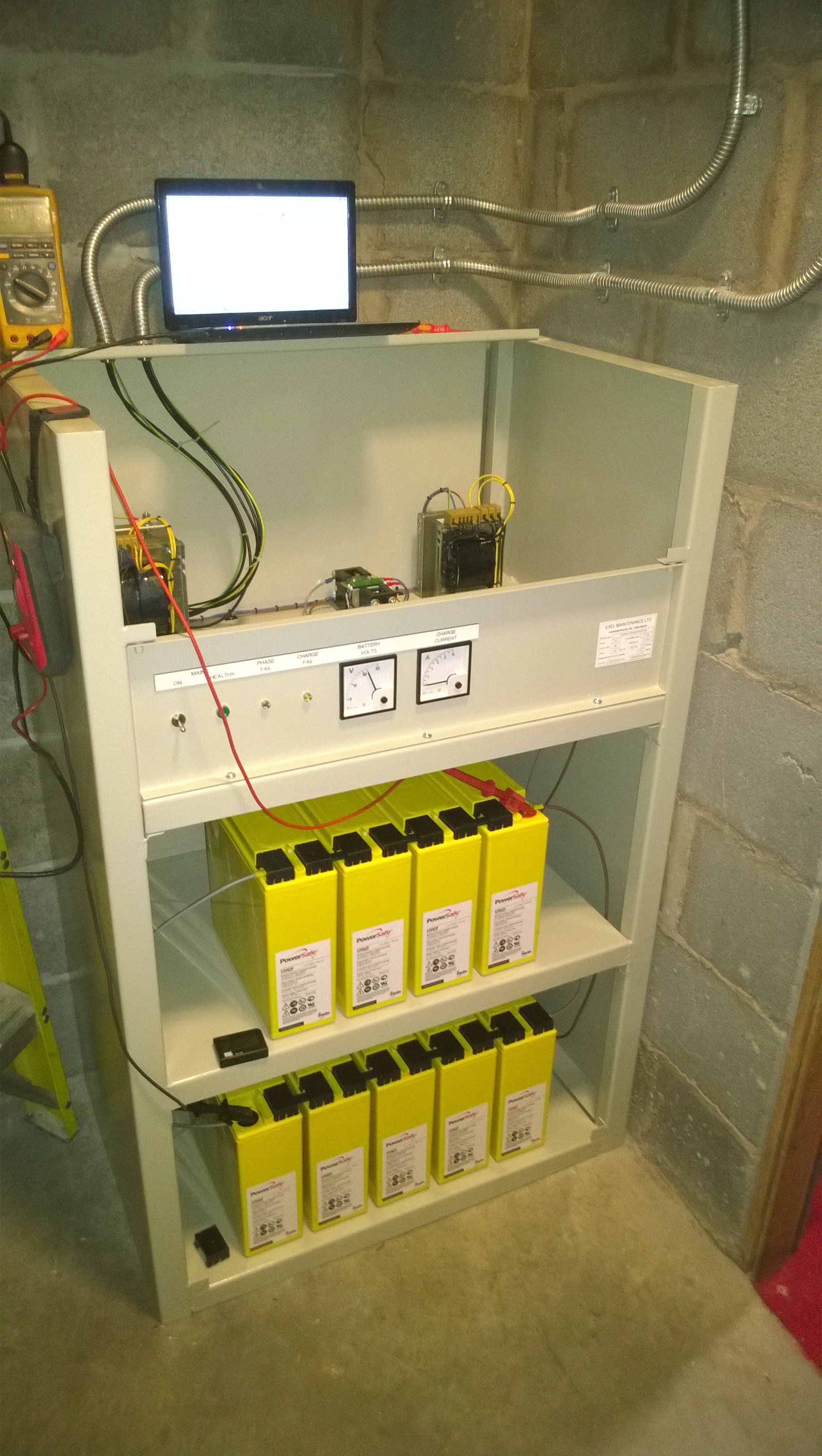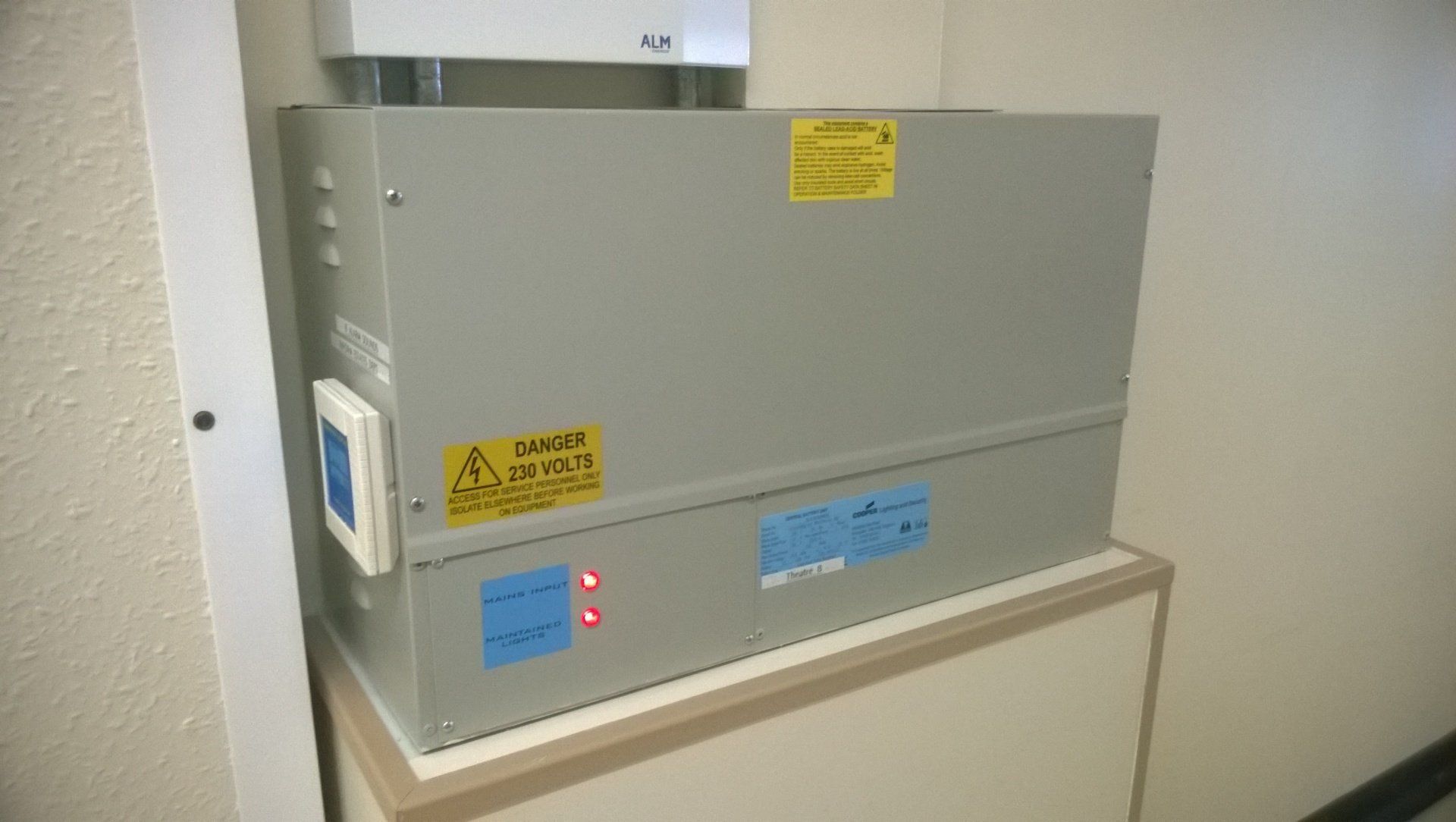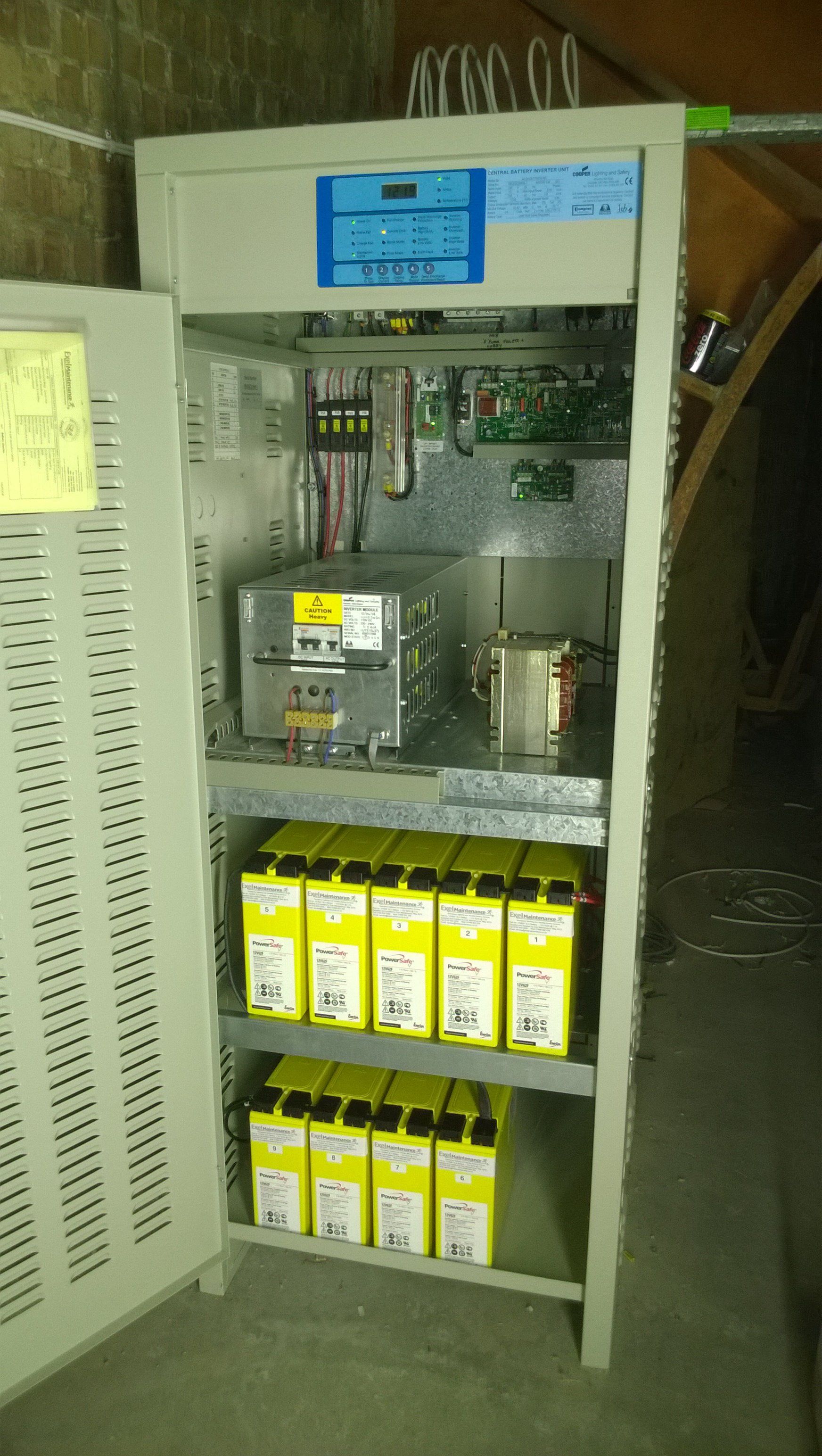For service please call: 07886 952258
Central Battery Systems
Power during a mains failure
A central battery system consists of a battery, charging equipment and controls. They are designed to provide power in the event of a mains failure. They may be designed for emergency lighting, but other applications such as fire alarms, switch tripping/closing, fire shutter doors and PAVA/EPAS all require standby battery power by law.
A simple solution
There is some very sophisticated equipment out there. Not all may be suitable for your needs (see Case Study 1). Often a simpler solution is more appropriate. A more basic choice of equipment will certainly be cheaper initially, may well be more reliable, and will cost less to maintain and repair in the future.
Some systems are less efficient to run day-to-day. This is particularly so with static inverter and UPS based systems. A passive standby is the most efficient as no cooling fans or inverters are in use in normal conditions. If the inverter of an active standby system runs continuously, you may consume 1 or 2kW of power just to run the machine before any load is connected.
We maintain and repair all makes of equipment
Just because your equipment is old or faulty, it does not necessarily mean it needs replacing. We can maintain and repair all makes of equipment. Almost all faulty equipment can be repaired, possibly saving you thousands of pounds.
If replacement is preferred, as an independent company we have an unbiased opinion and can offer sound advice to make sure you get exactly what you need. No more – no less.
Case study 1
We became aware of a local authority project. They required a central battery system and LED slave luminaires for high-rise tower blocks. One supplier had proposed using 3 low power addressable CBUs and addressable luminaires for each block of flats.
When we asked the client how they wanted the system to work, they said they wanted non-maintained operation and LED luminaires throughout. Our response was ‘Why would you need sophisticated addressable equipment if you intend to run the system non-maintained?’.
The client did not want a static inverter system, so we proposed a simple 110V ac/dc CBU with LED luminaires throughout, controlled by 7 monitoring hold-off relays.
With this scenario, the system would be extremely efficient and reliable. The only power consumption normally would be from the CBU charging the battery at just milliamps, and the hold-off relay coil circuits. No luminaires are lit unless a mains lighting sub circuit is lost or there is a power outage. Apart from having to replace a relatively small battery set every 10 years, this system will probably offer 30 years' trouble free service with minimal maintenance costs.
With the alternative proposal, the initial outlay for 3 smaller addressable CBUs and associated addressable luminaires was more than double in cost, the on-going maintenance costs would be far greater, and the reliability, due to the complexity of addressable systems, was unknown.
This client was so happy with the outcome they went on to employ the same system in two further projects.
Had this been done using self-contained luminaires, the initial cost would have been similar due to the number of luminaires involved (250 per site), but the maintenance costs would be far greater, as would all future repair costs, not to mention the laborious nature of maintaining such a system.
Central Battery Systems service, sales and repair.
For expert service and technical advice please call Exel Maintenance Ltd on07886 952 258
© 2024. The content on this website is owned by us and our licensors. Do not copy any content (including images) without our consent.


